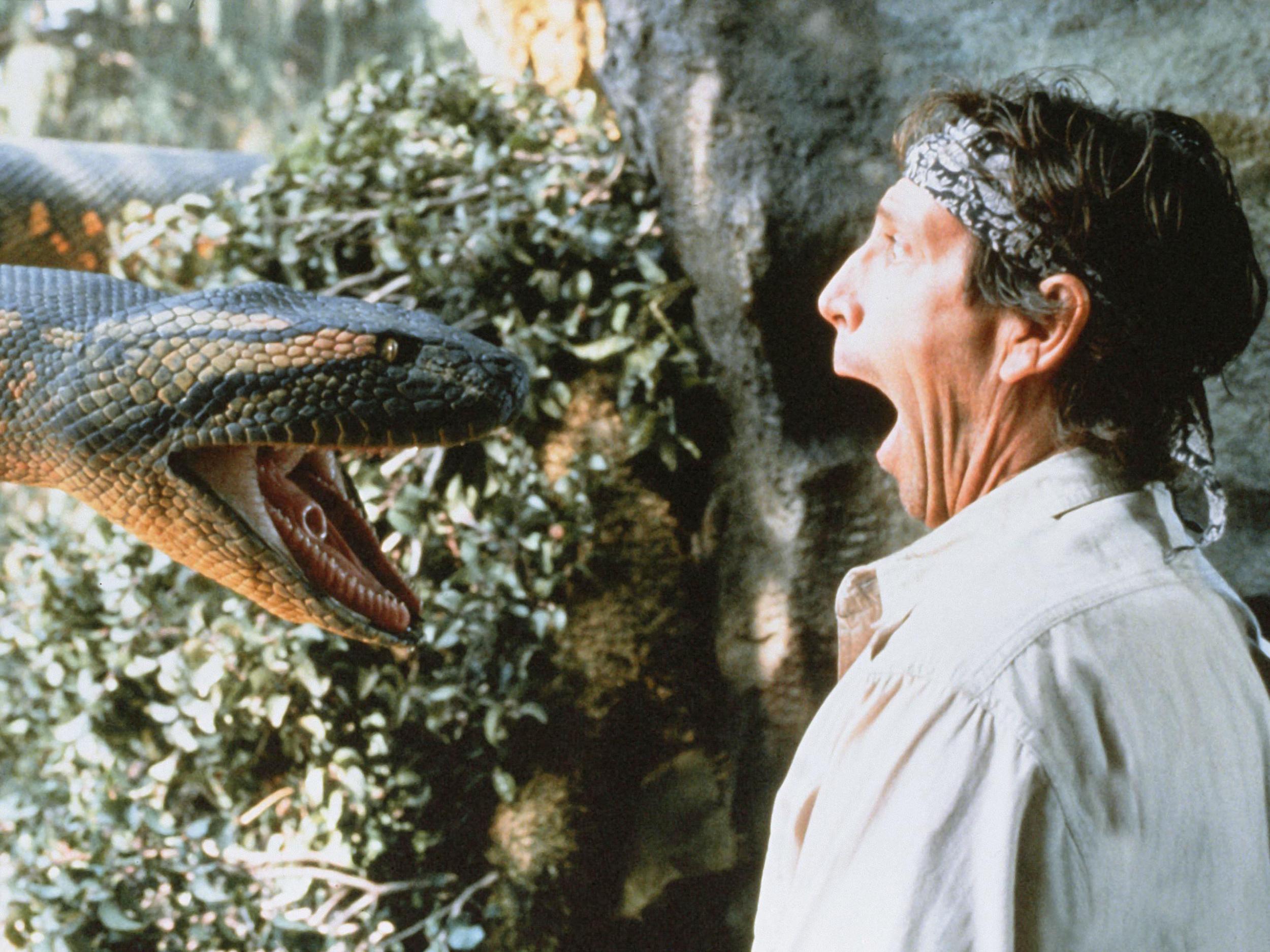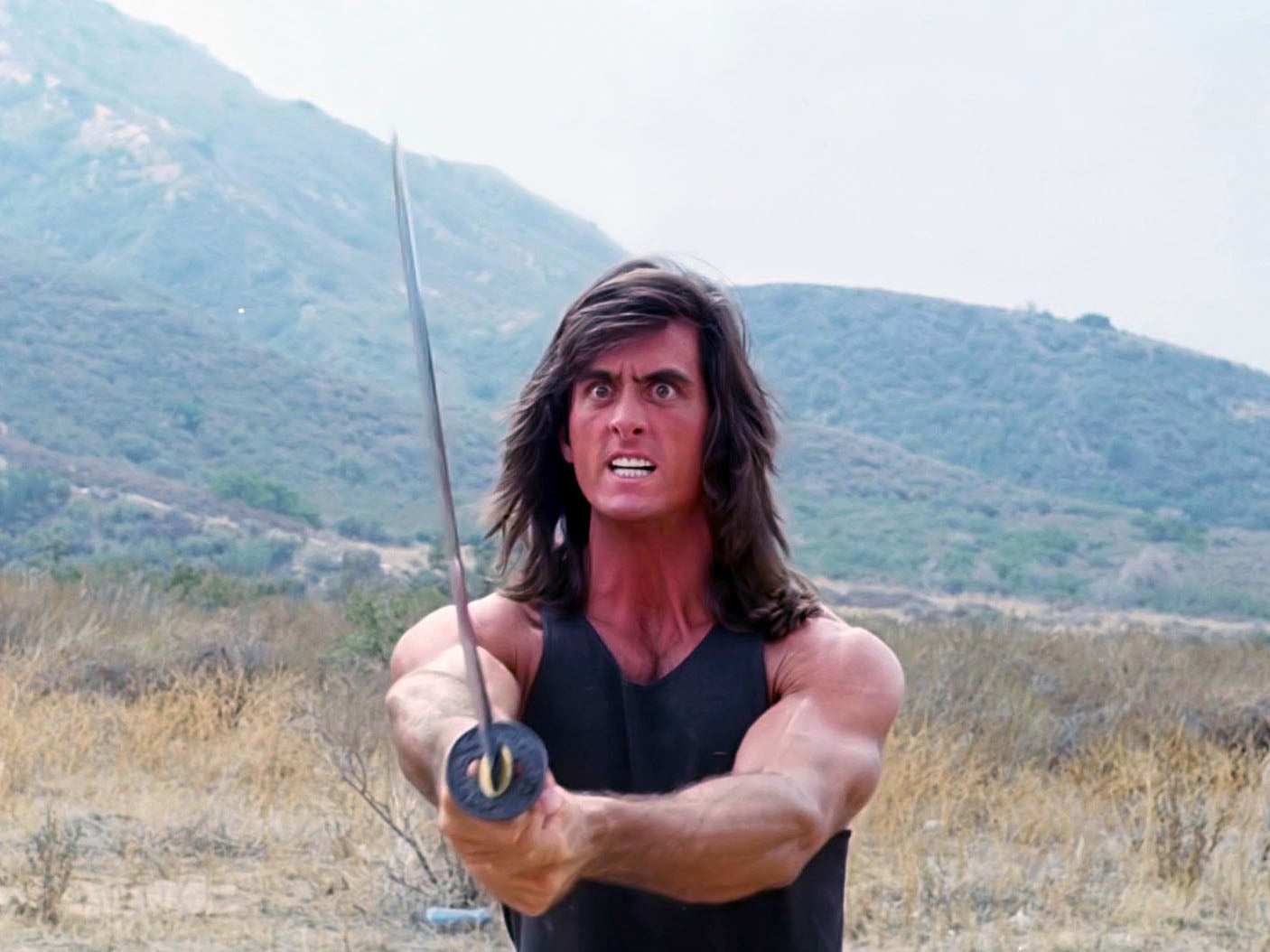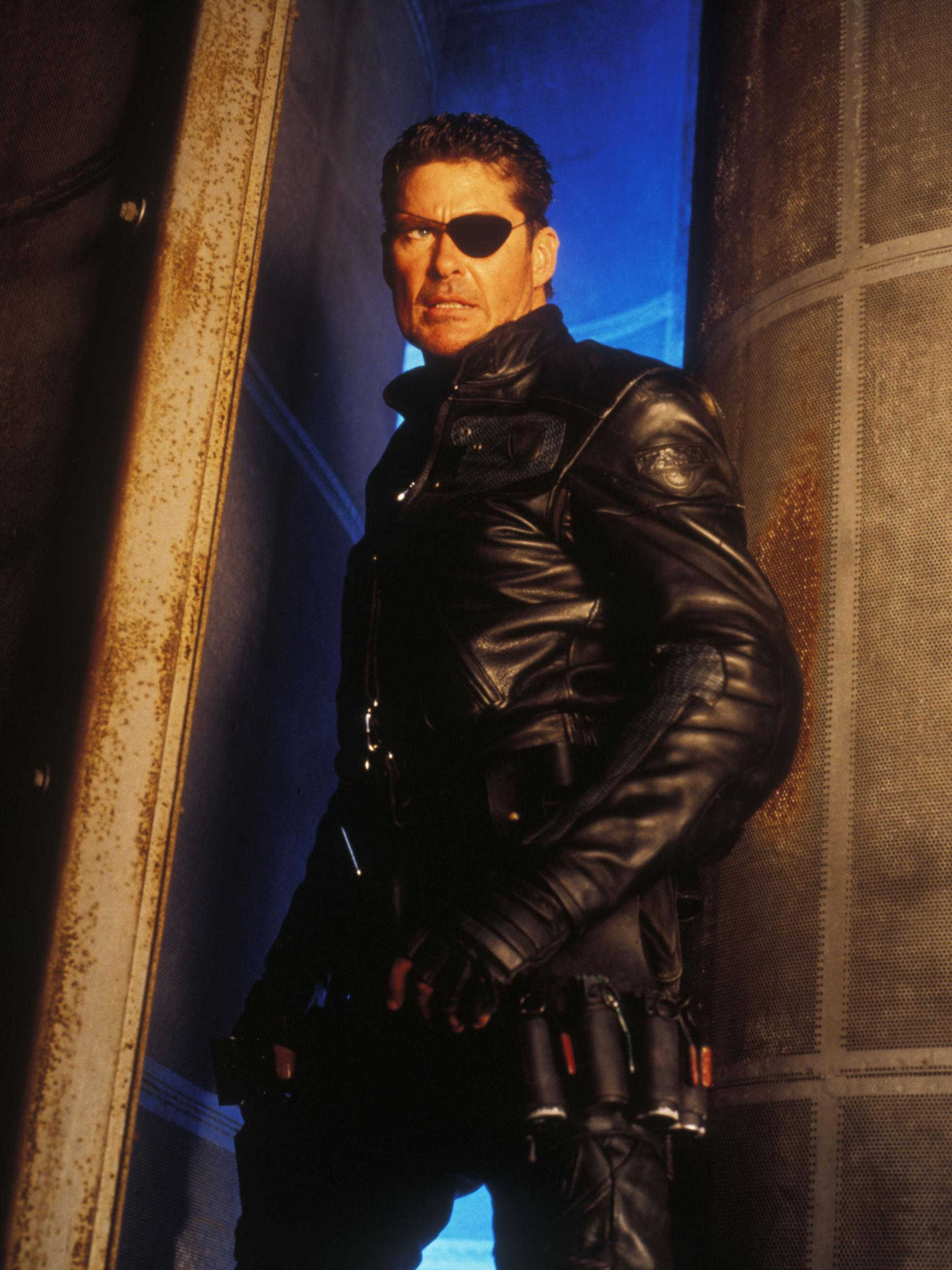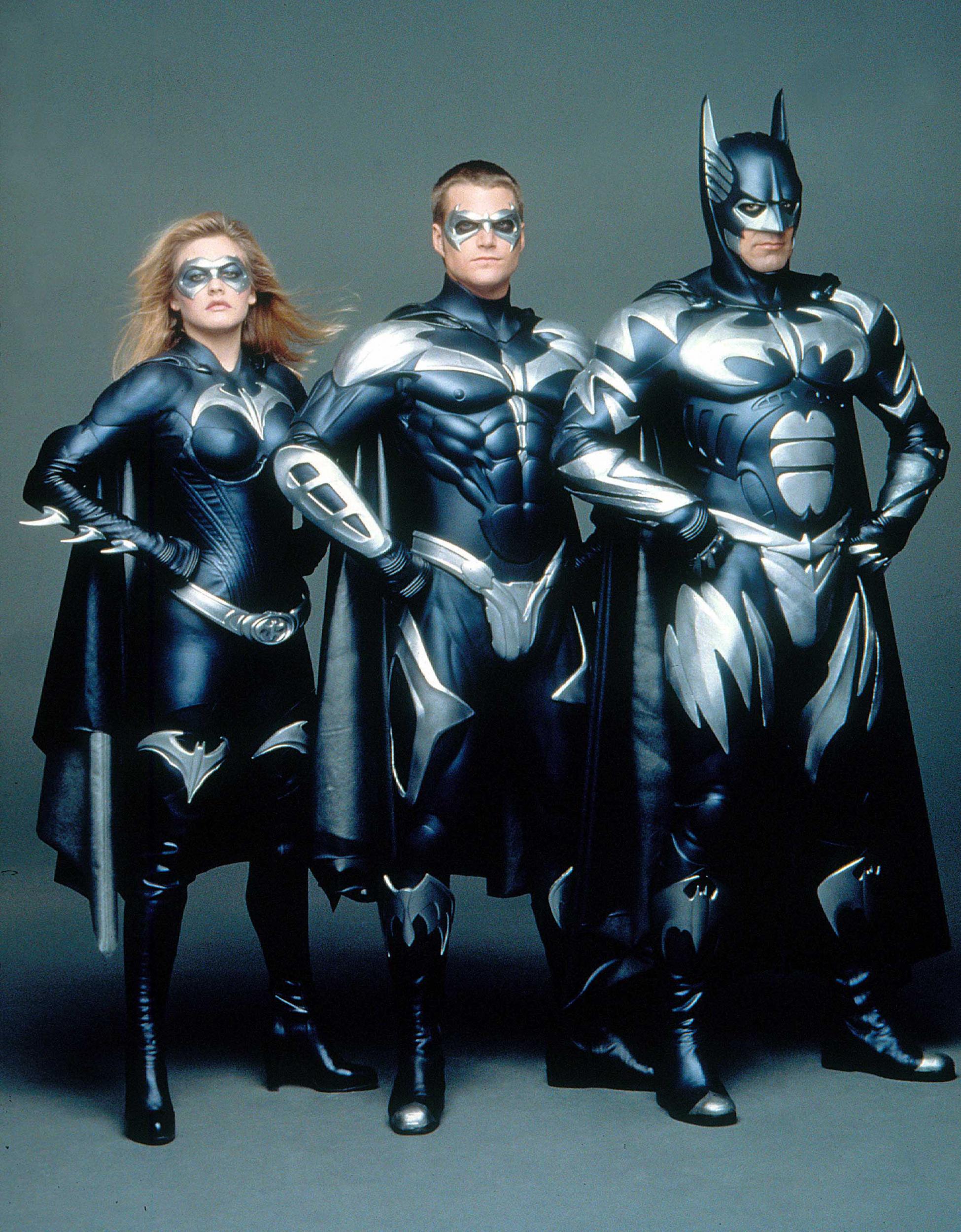Watching the defectives: Movies that are so bad they’re good
Rob Hill, author of ‘The Bad Movie Bible’, admits his research was expensive, time-consuming and psychosis-inducing. ‘I've done it so you don’t have to,’ he says, which comes as a relief to David Barnett

Your support helps us to tell the story
From reproductive rights to climate change to Big Tech, The Independent is on the ground when the story is developing. Whether it's investigating the financials of Elon Musk's pro-Trump PAC or producing our latest documentary, 'The A Word', which shines a light on the American women fighting for reproductive rights, we know how important it is to parse out the facts from the messaging.
At such a critical moment in US history, we need reporters on the ground. Your donation allows us to keep sending journalists to speak to both sides of the story.
The Independent is trusted by Americans across the entire political spectrum. And unlike many other quality news outlets, we choose not to lock Americans out of our reporting and analysis with paywalls. We believe quality journalism should be available to everyone, paid for by those who can afford it.
Your support makes all the difference.We’ve all seen them. Turkeys. Stinkers. Absolute howlers. The movies that leave you sitting alone in the darkness through to the end of the credits, not in the hope of seeing Robert Downey Jr tapping someone up to join his super-hero club, but in sheer disbelief at the amount of money you’ve spent on a ticket, a bucket of popcorn and a barrel-sized fizzy drink just to sit through this absolute pile of rancid toss.
Art of any kind is a subjective business, of course, and cinema is no different. One man’s Citizen Kane is another’s Plan 9 From Outer Space. But there are some movies that garner almost universal condemnation, that make you wonder just how this stinking mountain of tripe managed to get made.
A good measure for these sorts of movies can be found on the website Rotten Tomatoes, which aggregates reviews and critical responses to films to give them a percentage rating. Most recently, the movie that was propping up the database with a rare, gold-plated zero-percent rating was this summer’s The Emoji Movie which, if you haven’t heard of it, is a movie about emojis, the little pictures you use on Twitter or text messages when you really can’t think of anything to say and want to close down the conversation quickly.
Even the presence of feted Shakespearean actor Sir Patrick Stewart, voicing in the animated car-crash a goggle-eyed turd, could not save the movie from widespread disdain, up until last month when some charitable soul – let’s say her name, because she’s obviously a nice person. It’s Betsy Bozdech of Common Sense Media – gave The Emoji Movie a not-searing review which lifted it from the basement of nul point to a slightly less embarrassing six per cent.
Other movies attracting widespread derision on Rotten Tomatoes include such undoubted mainstays of your DVD collection as The Ridiculous 6, starring Adam Sandler, Eddie Murphy’s A Thousand Words, and a rare misstep for the National Lampoon team, Gold Diggers.

Still, Rotten Tomatoes only aggregates its scores from ratings given by film critics, and we all know that they can often be out of touch with what real people actually like watching. No, a film about giant robots knocking seven bells out of each other might not stack up in terms of narrative depth to some Bulgarian indie flick featuring a mute orphan fishing in a pond for two hours, with no dialogue and only a digitally-enhanced cicada orchestra for soundtrack (I just made that up but I bet one of your arty-farty friends will claim to have seen it if you mention it over dinner tonight), but you know which one is going to be a box-office winner.
Not-great movies are not always bad movies. But bad movies are bad movies for everyone. Apart from when they come full circle, and become those rare beasts, films that are so bad they are actually, in a weird way, good.
Enter British author Rob Hill who – just in case you were lacking a few truly horrendous movies in your collection – has assembled a whole book of ’em, The Bad Movie Bible.
“Most movies aren’t very good,” says Hill. “That shouldn’t be a surprise to anyone. Nor should it be a surprise that some are so cheesy, over-the-top or ineptly made that their inadequacies, supposed or otherwise, can create a curious appeal.”
The Bad Movie Bible is a celebration of those turkeys which, despite ourselves, we’ll start watching when they come on at some godforsaken hour on some channel in the satellite programme guide backwater. And just because they’re bad, that doesn’t mean people don’t like them.
“Don’t assume the ironic enjoyment of a movie’s apparent shortcomings is automatically derisive or snide,” warns Hill. “The word ‘bad’ may be appropriate, but is just as often a misnomer substituting for terms like corny weird or excessive.

“People love these movies. They may have been shunned by critics, they may not be what the filmmakers intended or what audiences are used to seeing, but they’re enormous fun to watch.”
But what movies are we actually talking about here? Well, Hill’s book is stuffed with them. Some of them you might have even seen, others you won’t unless you were the sort of person who, back in the 1980s, shuffled through the garish covers of VHS films you’d never heard of featuring actors even their mums hadn’t heard of.
But while we opened this piece with a nod to the mighty Marvel movies that have commandeered the box office, let’s start the selection from Hill’s book with a film based on those self-same comics. You’ve seen The Avengers, right? You’ve seen Samuel L Jackson’s turn as kick-ass SHIELD security agency boss Nick Fury? You’ve heard of David Hasselhoff, Baywatch-star-turned-ironically-uber-cool-international-treasure?
But have you heard of 1998’s Nick Fury: Agent of Shield film, starring Hasselhoff as the titular super-spy, complete with eye-patch (a note for continuity fans; prior to the Marvel Cinematic Universe and some later comics, Fury was originally white and one-eyed).
Rob’s review? “Anyone wanting to take this thing seriously will be disappointed almost immediately when we’re introduced to Fury, who is in exile, swinging a pickaxe at the wall of an abandoned mineshaft. A whole review could look at just this introductory scene. Why is Nick Fury swinging a pickaxe at the wall of an abandoned mineshaft? Is he really mining something? Right at the entrance? Do people still mine with pickaxes?”

There are some right gems in here. Anyone remember Samurai Cop (1991)? For some reason he’s an LA cop who’s allowed to take a Japanese samurai sword on duty. Sample dialogue lovingly assembled by Hill includes: “I will bring you his head and I will place it on your piano”, and – which must have sounded so witty in the script meetings – “Have you been circumcised? Your doctor must have cut a large portion off.”
As you might imagine, the science fiction, fantasy and horror genres provide fertile ground for Hill. He actually picks a few movies I’ve not only heard of, and seen, but actually enjoyed, one of them being 1980’s Battle Beyond The Stars. I thought this was a pretty cool space movie, but then again I was ten and one of the big draws might have been, now I think about it, Sybil Danning playing a space warrior-woman practically falling out of a highly inappropriate costume.
Even Hill concedes “it might be better than you think, watered down in our memories as it is by the real [Star Wars] imitators. But it features enough hokey sets, ridiculous costumes and cheese to be good-bad.”
Big budget and big name movies don’t escape Hill’s critical eye, either. Batman and Robin had it all, cast-wise, with a roster including George Clooney under the hood, Arnold Schwarzenegger, Uma Thurman, Alicia Silverstone, and Chris O’Donnell as the Boy Wonder. But, as Hill points out, it “cranks the stupid up to 11” and ends up being nothing more than “a ridiculous abomination”.
One movie that I’m almost burning to watch is 1984’s Black Devil Doll from Hell, just to see if it really lives up to Hill’s assertion of being “one of the worst movies ever made. It’s also fair to say it’s so bad it might not be good at all.”
Actually, having read Hill’s full summary, I don’t want to watch this at all. It does sound truly horrible: “Devout Christian Helen Black is determined to maintain her virginity until she marries. After feeling compelled to buy a peculiar-looking doll in a thrift store, she’s mildly surprised when the toy comes to life. A passionate sexual relationship follows.”

Which sounds pretty eww. Fortunately, we don’t have to watch it. Rob Hill has done it for us. And even if we did, where would we find it?
“As much fun as these movies are to watch, they can be a nightmare to find,” agrees Hill. “For every Miami Connection there are a dozen Miami Golems. For every discovery that makes you want to punch the air there are many more that make you want to punch the director.
“I’ve seen thousands of movies classed as critical failures. As research for this book intensified, I watched up to half a dozen a day for weeks on end.
“Sorting the wheat from the chaff is an expensive, time-consuming and psychosis-inducing job. I’ve done it so you don’t have to.”
But if you did need an excuse to watch some of the films in this book, Hill gives you the perfect justification. He adds, “Whether we want to admit it or not, humans can derive a sense of satisfaction from the failure of others. Most of us like to think we’re intelligent, capable people. Watching supposed professionals do something badly can invigorate our ego.
“We can feel clever for having identified their failure and emboldened by the belief we could have done it better. It’s all subconscious, but these movies make us feel smart.
“I call it Adam Sandler Syndrome.”
‘The Bad Movie Bible’ by Rob Hill is out now from Art of Publishing Ltd.
Join our commenting forum
Join thought-provoking conversations, follow other Independent readers and see their replies
Comments